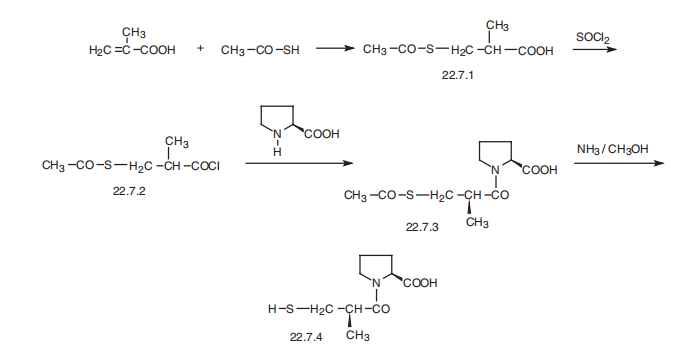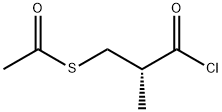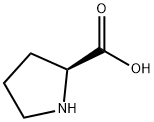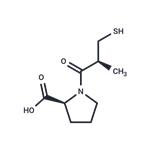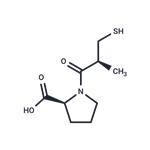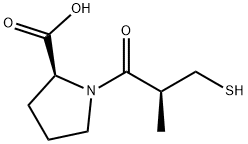
Captopril
- Product NameCaptopril
- CAS62571-86-2
- CBNumberCB6206769
- MFC9H15NO3S
- MW217.29
- EINECS263-607-1
- MDL NumberMFCD00168073
- MOL File62571-86-2.mol
- MSDS FileSDS
Chemical Properties
| Melting point | 104-108 °C (lit.) |
| Boiling point | 427.0±40.0 °C(Predicted) |
| alpha | -129.5 º (c=1, EtOH) |
| Density | 1.2447 (rough estimate) |
| refractive index | -127.5 ° (C=1.7, EtOH) |
| storage temp. | room temp |
| solubility | H2O: 0.1 g/mL, very slightly hazy, colorless |
| form | Crystalline Powder |
| pka | 3.7, 9.8(at 25℃) |
| color | white to off-white |
| biological source | synthetic (organic) |
| Water Solubility | soluble |
| Merck | 14,1774 |
| BRN | 477887 |
| BCS Class | 3 |
| Stability | Stable. Incompatible with strong oxidizing agents. |
| CAS DataBase Reference | 62571-86-2(CAS DataBase Reference) |
| NCI Dictionary of Cancer Terms | captopril |
Safety
| Symbol(GHS) |

|
|||||||||
| Signal word | Danger | |||||||||
| Hazard statements | H341-H360F | |||||||||
| Precautionary statements | P201-P308+P313 | |||||||||
| Hazard Codes | Xn,Xi | |||||||||
| Risk Statements | 43-63-36/37/38-40 | |||||||||
| Safety Statements | 36/37-37/39-26-36-22 | |||||||||
| WGK Germany | 2 | |||||||||
| RTECS | UY0550000 | |||||||||
| HS Code | 29339900 | |||||||||
| Hazardous Substances Data | 62571-86-2(Hazardous Substances Data) | |||||||||
| Toxicity | LD50 in mice (mg/kg): 1040 i.v.; 6000 orally (Keim) | |||||||||
| NFPA 704: |
|
